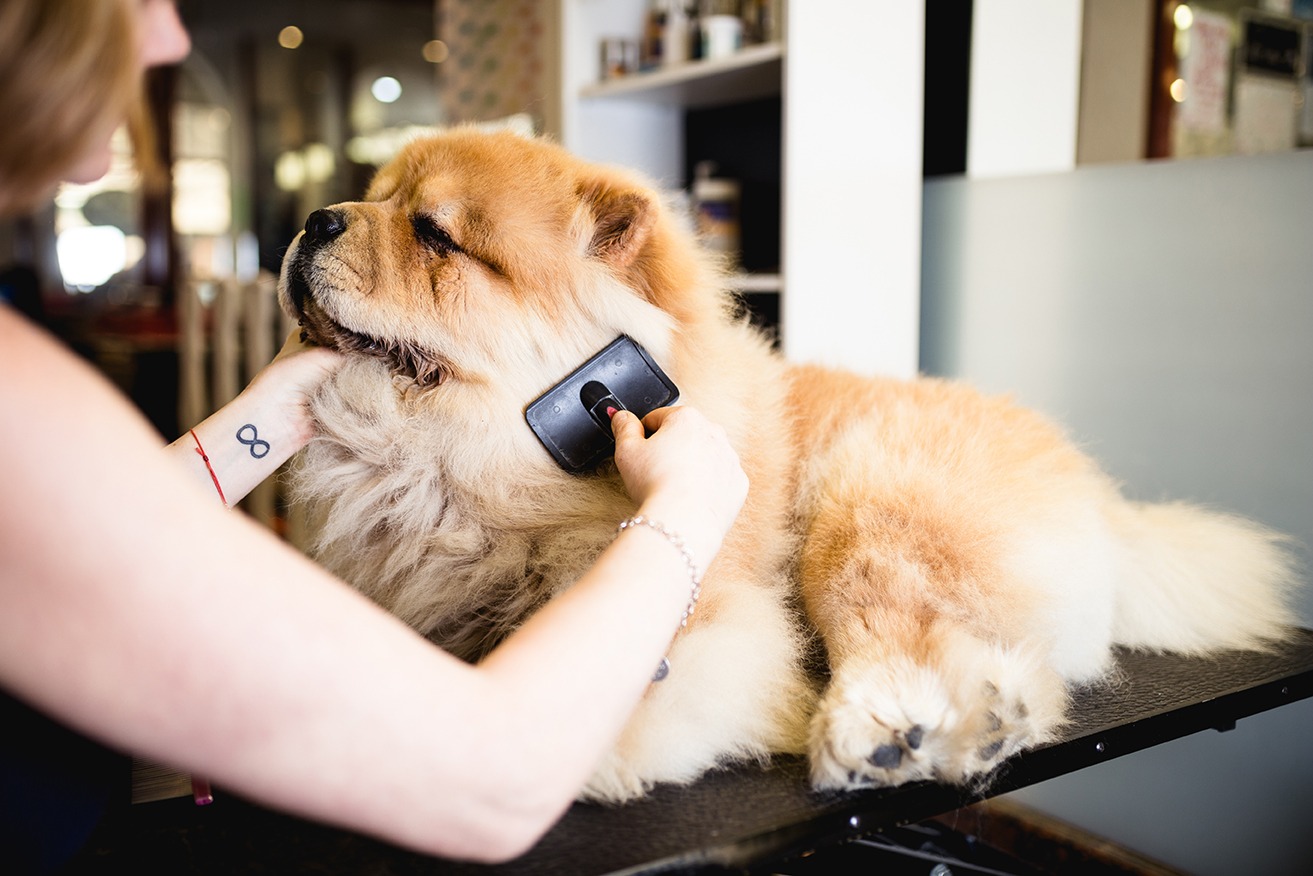Regular grooming not only ensures that your pet’s coat stays in good condition, but it can also increase the bond between you and your pet.

But grooming isn’t the only thing you can do to keep their coat in tip-top condition.
We give some tips below on how nutrition, environmental factors and grooming can all help keep your pet looking their best.
- Start young
If you have a puppy or kitten, it is important to get them used to being brushed from an early age. Introduce a soft brush and use it daily making sure to give them some tasty treats while you brush them.
- Keep grooming positive
If you have a dog or cat who hates being groomed, you can train them to accept it. Use a soft brush and introduce brushing slowly. Brush gently over their back and then reward them with a small treat. Always brush in the same direction as the hair coat. The idea is to get them used to the brush initially and not to groom them. Build up the time and intensity until you can brush them effectively without them resenting it.
- Train your dog to stand to be groomed
Dogs can be trained to stand up while you groom them by using positive reward based training. Use a treat and ask them to sit. Walk forward holding the treat in front of their nose and they should then stand. When they can do this reliably say “stand” as they stand up and reward them. When you can use the “stand” command to make them stand up, combine this with brushing, gradually building up the time that you brush them for.
- Have a daily routine
Grooming your pet at the same time each day will ensure that your pet comes to expect being groomed. Brushing dogs after a walk is a good idea to rid them of mud and burrs which could matt in their coat. It also means that you will see any ticks that they may have been picked up on a walk. Brushing cats before you give them their food will help make sure that they start to look forward to being brushed.
- Protect your pet from parasites
Repeated itching is often the first sign of flea or tick infestation, which can lead to visible patches of hair loss and reddened, irritated skin. These parasites are tiny (often the size of a poppy seed) so can be extremely hard to spot, but you might see them on their fur or if you use a flea comb.
Fleas may also cause skin allergies and can transmit other parasites, such as tapeworms, to your furry friend. Because worms can cause your dog or cat to become malnourished, they can also cause a dull, shabbier coat.
Bob Martin Clear and Clear Plus range of spot ons and tablet treatments will kill parasites like fleas, ticks and worms, while also protecting your home for up to 12 months by breaking the flea life cycle.
- Give your pet nutritious food
The coats of dogs and cats are made up of 95% protein, so to maintain its healthiness, it’s essential to provide nutritious, protein-rich foods.
Healthy fats, like omega-6, play an important role in keeping your dog’s coat in good condition, so the first thing to look for in pet food is that it is made with quality, nutrient-rich ingredients.
However, if you’ve been feeding your pet quality, nutritious food and still notice dry skin, dandruff flakes or dull-looking fur, it may be time to talk to your veterinarian who may recommend supplementation.
- Omega-3 supplements
The Bob Martin Omega-3 Fish Oil is ideal for use as a daily supplement for dogs and cats. Working to maintain the health and overall condition of your pet, this formula helps to improve the texture and appearance of the pet’s coat, while reducing dandruff.
Omega-3s also improve the health of hair follicles, which means less shedding.
- Use specialist pet shampoos
The pH of your pet’s skin is not the same as human skin, so use a shampoo that is specially formulated for pets. Use a mild shampoo for routine bathing or one that has been formulated for puppies or dogs for a more sensitive skin type. If your dog has a tendency to roll in unsavoury things then you may need a deodorising shampoo. This will neutralise the bacteria causing the smell and leave your dog smelling fresh again without the need for several shampoos.
- Make sure you dry your pet after shampooing
Pets will get cold quickly if they are not dried after shampooing, especially if they are small, old or have a thin coat. Using a hair dryer is great if your pet will tolerate it. Introduce hair dryers gradually and use treats to get your pet used to it. Always use the coolest setting so that you do not burn your pet.
- Keep water out of eyes and ears
Animals hate getting water in their eyes and ears so it is important to avoid these areas when bathing your pet. In addition to making your pooch shake water all over you, excess water in your pet’s ears can cause ear infections if not dried properly. To ensure this doesn’t happen, you could place a small amount of cotton wool in their ears during the bathing process.

